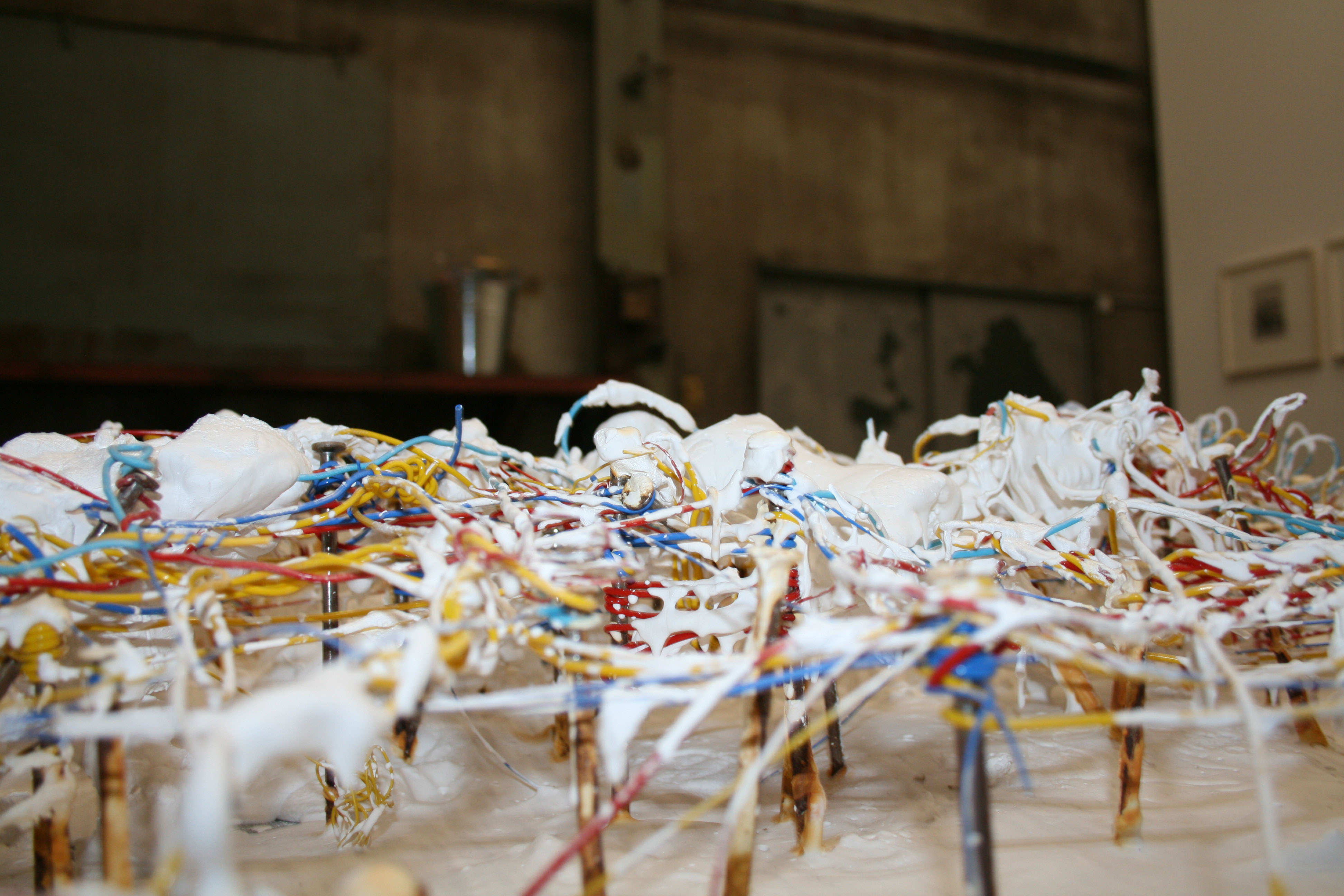Architecture isn't rock 'n' roll, so I've always had my suspicions of any architect whose fame seems to be on the inflated side. Although Arata Isozaki is something of a superstar in the world of Japanese architecture — and has also written interesting and thought-provoking books, such as the excellent "Japan-ness in Architecture" (2006) — I've never been particularly impressed by his building designs, which often resort to large, simple geometric elements.
In addition to creating eye-catching structures befitting a big-name architect, this also gives some of his better-known works, including the Team Disney Building in Orlando, Florida, and Art Tower Mito (frequently on our TV screens this year whenever a tremor strikes Ibaraki Prefecture) an appearance not unlike giant children's building blocks. I was intrigued therefore to hear about an exhibition at the Misa Shin Gallery in Tokyo "revealing" Isozaki's creative process.
Not content with being one of this country's most successful architects and writers on architecture, Isozaki, it seems, also wishes to be considered something of an artist. Rather than focusing on the technicalities of architecture, the show instead presents pastel concept art, silk-screen prints, and etchings by Isozaki, signed and numbered for the art collector.
Of course it might be argued that this is a normal enough way for a big-name architect to clean out the office drawers, but it's also clear that the paradigm of "artistic genius" is as important to Isozaki as it perhaps was to the likes of Pablo Picasso and Salvador Dali.
This is made clear by the centerpiece of the small exhibition, a work titled "Incubation Process / Joint Core System" (1962 / 2011), which also calls to mind another artistic superego, the Abstract Expressionist painter Jackson Pollock.
Originally executed at the 1997 exhibition "Japanese Art 1960s: Japanese Summer 1960-64" held at Art Tower Mito, it resembles a lively action painting, but rather than a canvas Isozaki has used a table-mounted aerial photograph of pre-Olympic Games Tokyo. With this as a starting point, nails have been hammered into the surface, colored wire has been strung between the nails, and then white plaster of Paris poured over everything by a group of random participants given free rein by Isozaki.
As you would expect with such a process, the aesthetic result leaves a lot to be desired. However, the point of the work is to serve as an introduction to the architect's theory of the city as an ever-changing, constantly reformulated and disharmonious system, and to the architectural styles that resulted from a mystical process of occlusion and incubation.
The etchings that look down on the central table and a long silk-screen print provide further hints and clues. The etchings show sci-fi architecture riffing off ruined Grecian columns, while the silk-screen print depicts futuristic structures growing out of the landscape of Hiroshima devastated by the atomic bomb.
The words chosen by Isozaki to accompany these images from his 1962 book "Visions of the Present" have something of the mystical about them.
"The occluded state is the terminus in the generation process, and the energy sealed and accumulating within becomes a means for incubation," he writes in an apparent attempt to baffle and belittle the layman. But, gradually, the theme of creation arising out of destruction emerges.
"Urban planning which doesn't include the idea of destruction should be carried out in nursing homes. The transformation of our cities begins with massive cracks. When an amorphous muddy substance seeps out from terra firma and swallows up the abundantly virtuous and indolent city, a new incubation will follow upon its destruction."
While urban planning, architecture, and our metropolis have gone through countless changes since these words were written, they are offered, along with the ambiguous imagery, as timeless pronouncements. The city may have changed but Isozaki's esoteric insights apparently don't have to.
Although this is a small exhibition, the overall impression it gives is of the enormous ambition of the man behind it — a superstar architect, would-be artist, abstruse philosopher, and star-clouded mystic atop the Mount Sinai of Japanese architecture — down in a small gallery in the backstreets of Tokyo.
"Isozaki Arata: Process" at Misa Shin Gallery runs till Oct. 29; admission free; open 12 noon-7 p.m., closed Mon., Sun. and holidays. For more information, visit www.misashin.com.



















With your current subscription plan you can comment on stories. However, before writing your first comment, please create a display name in the Profile section of your subscriber account page.